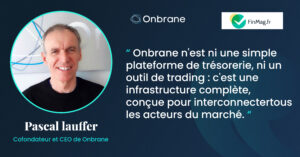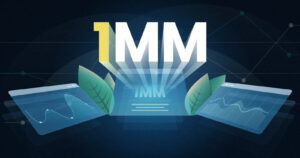An extraordinary crisis
We are at a historical turn. Today’s crisis is not just another financial crisis. This time it is different. The 2020 financial crisis has been triggered by a pandemic in the context of serious global warming concerns. Yes, this time it is different as the extreme measures taken by countries all around the world demonstrate. We won’t be able to carry on like nothing happened.
The COVID-19 pandemic has irrevocably exposed severe weaknesses in our social and economic construct.
For many of us, it is a terrifying time but I would argue it is also rallying time. This pandemic might be the black swan event that will empower us to build a better world by addressing issues we have been ignoring for too long.
Lessons learned
After a few months since the inception of this crisis, what have we learned?
The first lesson is that globalization comes at a price. We already knew that concentrating productions in some countries had negative impacts including on our climate.
Now countries around the world also find themselves too dependent on others for essential goods. In the words of the French president Emmanuel Macron on March 13, “To delegate our food, our protection, our ability to take care of our living environment to others is madness”.
The second lesson we have learned is that our financial system remains fragile and the finance industry has not managed to recapture the trust of the public.
While it must be noted that no systemic failures occurred, we must also note that the same old structural flaws are still present. Again central banks around the world had to come to the rescue to keep the finance industry from collapsing.
Again, unprecedented amounts of liquidity are being injected to keep the system going. Yet, the capital market has come to a screeching halt preventing the real economy from financing its day to day activities effectively.
The third lesson is that a virus can bring the world economy to its knees with unfathomable consequences. This is because of the two previous points but also because confined people are unable to properly perform their duty from home.
This is understandable for some industries such as construction but unwarranted for many others. Additionally, the decision to put nearly 3 billion people under lockdown is, first and foremost, the result of the absence of reliable information.
As of today, we still have no specific data on either the outstretched nor the potency of COVID-19. Without data, it is fear that drives our decision making with socioeconomic consequences we are yet to fully comprehend.
We are still at the beginning of the 2020 coronavirus pandemic, and more lessons will certainly emerge as we fight our way out of this crisis.
But already countless voices around the world are demanding that the after must not be like the before.
Turning to technology
Many public and private leaders alike are answering the calls for change and are here and now committing to engage in the improvement of our damaged social and economic construct. Fortunately, as we collectively embark on this colossal endeavor, we can turn to technology for solutions and inspiration.
For solutions, as many of the problems exposed by the crisis have already been solved in the tech world. To name a few, accessibility (stay home) has been solved by virtualization; reliability and scalability (supply chain) have been solved by distributed systems; monitoring (crisis management) has been solved by digitalization and dashboarding.
And for inspiration, as emerging technology such as AI (Artificial Intelligence) would improve our ability to anticipate and solve such crisis; IoT (Internet of Things) would allow us to multiply remote measurement and action points; Blockchain technology would allow us to reimagine our ways of working with significantly more decentralization and cooperation.
Imagine a world where real-time information about people’s health is routinely collected ethically (smartwatches, connected captors in public places).
Imagine powerful AI continuously processing this data to anticipate diseases and detect potential outbreaks. This alone would almost eliminate any risk of pandemic. But imagine if a pandemic would break, instead of confining everybody we would be able to only confine the people requiring it.
Those confined would be able to perform their duty and stay connected to people thanks to virtual offices. Finally, for those getting sick, imagine a world where critical resources (respirators and hospital beds in the case of COVID-19) would be visible on a public Blockchain allowing for dynamic allocation and decentralized management.
In such a world, lives would be saved, fear would be minimized and the economy would keep going. When comparing this dream world to what we are living today, this seems utopian. Yet, the technology already exists, we just have to put in place.
The 5 driving forces – 3DiVA
We have made spectacular technological progress over the past decades. This is in no small part thanks to a drastic improvement in our ways of working based on sharing and collaborating.
Our social and economic construct, in the meantime, has not changed much. The historically unprecedented restriction of freedom people are enduring right now compounded by financial hardship will push the real world to catch up with the virtual world.
The result will be a new social and economic construct shaped by the 5 following driving forces born of technology – the 3DiVA:
- Digitalization – to improve interconnectivity and as an enabler to the 4 other driving forces
- Decentralization – to eradicate single points of failures and increase local responsibility
- Distribution – as a mean to increase reliability, scalability and performance
- Virtualization – to remove hard dependency from physical constraints whenever possible
- AI-ization – as a result of more data availability and the need for smarter decision making
The primary debt market in focus
I believe the 3DiVA will reshape the public and private sectors alike. The finance industry, already under transformative pressure from regulators, markets and fintechs, will be one of the first in focus with healthcare.
Within the finance industry, the financing of the economy through the primary debt market for large entities and through banks for the others is, as mentioned before, particularly problematic. Here is what’s coming for this sector of the finance industry under the 3DiVA.
Digitalization
The financing of the economy is amongst the least digitalized financial activities and yet the most essential for the functioning of society. Financial products such as Commercial Papers, Loans or Bonds are, to these days, relying on voice and paper-intensive legacy processes.
In addition to the poor efficiency and traceability of these processes, the lack of digitalization also excludes all additional benefits that would result from Decentralization, Distribution, Virtualization and AI-ization (see after).
Moreover, digitalization lowers barriers to entry and creates a level playing field providing access to a much larger population of companies. We can therefore expect, post crisis, Financial Institutions to aggressively replace voice and manual operations and turn to industry platforms to digitalize the financing of the economy. Digitalization of the primary debt market will emerge from this crisis as a must-do.
Decentralization
The finance industry is apart from any other industries because of its proximity to governments but also because it relies on many centralized entities including central banks, exchanges and clearinghouses.
This explains in no small part the fragility of the system and its lack of evolution. The arrival of cryptocurrencies and Blockchain technology has demonstrated that a decentralized more efficient financial infrastructure was possible.
Many central banks around the world are working on their own CBDC (Central Bank Digital Currency) in order to leverage this technological breakthrough.
We can expect that this type of initiatives will only accelerate and multiply post-crisis. The historical trend to ever more centralization is over as technology can now offer a more agile and human alternative.
Distribution
The finance industry ecosystem is of a rare complexity. It is composed of many different types of actors with different roles and risk profiles (Banks, Asset Managers, Hedge Funds…).
Yet, at a macro level, some financial institutions are ‘too big to fail’ (posing systemic risk) and at a micro level some markets are dominated by too few actors with often similar risk profiles (CP markets, Local lending markets).
In normal market conditions this situation results in a lack of innovation and options for clients. In stressed market conditions, such as the ones we are witnessing presently, it leads to partial or complete market shutdown.
This problem can be solved by learning from distributed systems which have demonstrated uncanny reliability, scalability and performance level. To begin with, debt issuers should favor platforms that maximize their funding options by being open to as many liquidity pools as possible.
The wisdom of distributed systems is not limited to the dynamic of markets but also applies to post-trade processing. There too, market actors should aim at distributing their workload and resulting operational risk to multiple suppliers rather than concentrating it to closed and proprietary providers as they do today.
Virtualization
The finance industry is critical to keep the economy functioning during crisis albeit at a slower pace. The confinement led Financial Institutions to focus on their core business and adjust their operating model to allow their critical employees to work from home.
The implementation of remote offices often hit roadblocks because of too much reliance on physical infrastructures and unfit ways of working. This is especially true for trading activities relying on voice and legacy systems such as EBS or Bloomberg.
Financial Institutions will have to rethink their risk assessment model to favor secured cloud based platforms accessible from anywhere rather than heavy physical infrastructure surrounded by high walls. We can also expect regulators around the world to demand the generalization of ‘Virtual Offices’ as a contingency to any other crisis requiring people to work from home.
AI-ization
AI has gone from experimentation to widespread usage in our daily lives in a few decades. AI is taking on more and more complex tasks we thought only humans could be trusted with. The most remarkable demonstration of AI stunning progress is of course seen with the rise of self-driving cars.
But AI can do more than replace humans in doing the same tasks simply better and faster. AI also has the capability to look at old problems and find completely new answers. This is exactly what is needed if we want to better anticipate or prevent financial crisis altogether.
If a crisis do occur, AI can help remove human emotions from decision making and better manage outcomes. Additionally, AI will become a necessity with the rise of industry platforms connecting ever more parties together.
These market actors will need AI to get to know each well enough to transact together in a safe and profitable way. Post coronavirus crisis, the finance industry will accelerate the experimentation and use of AI. Eventually, we can expect AI to assist if not take over many critical functions in the primary debt market and eventually in finance.
Final words
We are at a historical turn. The COVID-19 pandemic has irrevocably exposed severe weaknesses in our social and economic construct. There is no turning back. It is now of our collective responsibility to roll up our sleeves and engage together in building a better world.
Most of the technologies we need to shape this better world are already available to us. The 3DiVA – Digitalization, Decentralization, Distribution, Virtualization and AI-ization – will pave the way.
The healthcare industry is certainly a priority but so is the financing of our economy. An improved primary debt market will be supported by open industry platforms, easy to implement, fast to adapt and capable of connecting a wide range of market actors across multiple geographies.
But this alone won’t be sufficient to address the structural weaknesses of the primary debt market. The ecosystem needs to work together to achieve a better level of decentralization and distribution necessary for this market to become more resilient and more capable of supporting the real economy regardless of market conditions.
We will beat COVID-19. We will overcome the current economic crisis and we will rally to build a better social and economic construct. As we do so, we must not forget that there are no healthy humans, no healthy economies and no healthy societies on an unhealthy planet.
Soon the confinements around the world will end and cars, trucks and buses will rush back to town centers. On top of being a major contributor to global warming, ambient air pollution is responsible for 4.6 million deaths every year (World Health Organization).
This is the world we and our children live in. Each time we are caught in traffic, let it be a reminder that the time to act is now.
Pascal Lauffer, CEO at Onbrane.






